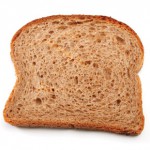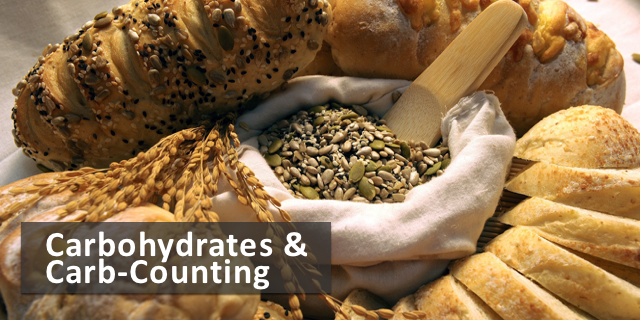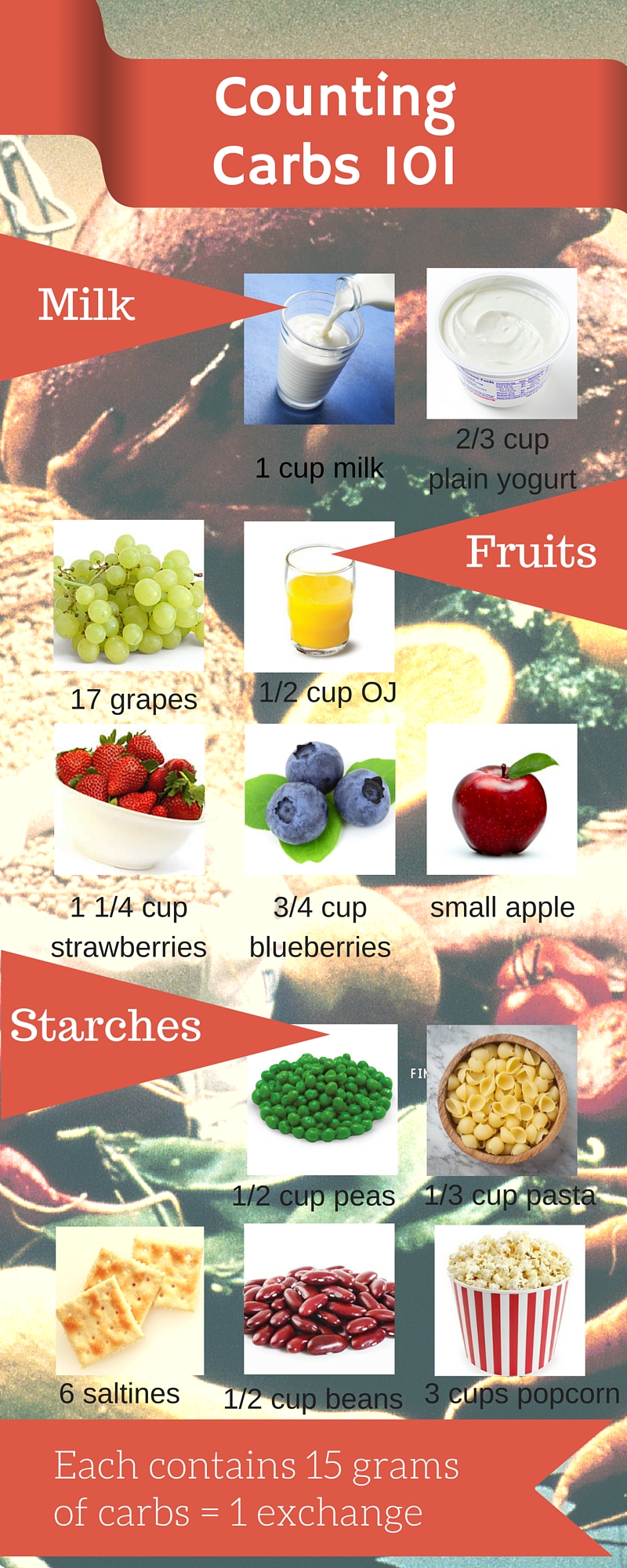What Is Carb Counting? Why Do I Need to Know?
 Keeping up with the amount of food we eat helps us stay healthy and fit. But for people with diabetes, being in touch with the amount of carbohydrates eaten is crucial to survival.
Keeping up with the amount of food we eat helps us stay healthy and fit. But for people with diabetes, being in touch with the amount of carbohydrates eaten is crucial to survival.
To learn about carbohydrate counting, you need to know a bit about food and digestion. Food is composed of carbohydrates, proteins and fats. During digestion, fats are broken down into glycerol and fatty acids; proteins into amino acids. Carbohydrates are converted to glucose. (The body can convert fats and proteins into glucose but it takes more energy than converting carbohydrates.)
Carbohydrates can be loosely defined as the sugars and starches found in food. Just to make things more complicated, however, not all carbohydrates are the same. There are simple  carbohydrates, like potatoes, juice, white flour or sugar and there are complex carbohydrates, like whole grains, vegetables and raw fruit. The simple carbohydrates convert into blood glucose at a faster rate than complex carbohydrates.
carbohydrates, like potatoes, juice, white flour or sugar and there are complex carbohydrates, like whole grains, vegetables and raw fruit. The simple carbohydrates convert into blood glucose at a faster rate than complex carbohydrates.
The Importance of Glucose
Because the brain’s primary fuel is glucose– and for red blood cells, it is the only fuel— glucose is essential to life. The whole body needs around 160 grams of glucose daily; of that, 120 grams is needed for the adult brain. The body’s glucose reserves are stored as glycogen in the liver (190g). There is also glucose that is free floating in bodily fluids (20g)—these two sources (210g) cover the daily needs of the body.
Normally, when you eat food, the pancreas detects the presence of glucose, fatty acids and amino acids in the small intestines. It secretes insulin into the bloodstream. Insulin acts on the liver, telling it to start building glycogen from that glucose. It also tells the cells of the body to absorb glucose and other nutrients from the blood stream. Insulin, in effect, lowers the amount of sugar in your blood.
Having Type 1 Diabetes or Insulin Dependent Diabetes
Being insulin dependent means that you need to inject insulin in your body. This is because either the islets of Langerhans in the pancreas have been destroyed by your immune system as in Type 1 Diabetes or your body’s cells do not respond to the insulin your pancreas produces as in Type 2 Diabetes and you need to inject insulin.
The amount of insulin that is needed at mealtimes depends on the amount of carbohydrates that are taken into the body. Having said that, the elimination of carbohydrates is definitely not a smart idea. You need the vitamins and roughage found in fresh fruits, vegetables and whole grains. In fact, as a general rule to keep in mind, carbohydrates should make up about half of all the food that you eat.
Determining the amount and timing of insulin—especially when adding in the complications of your activity level, amounts of food you eat, amount of stress you are experiencing, and more—can seem impossible. As Meri Schuhmacher , a mother of 3 boys with Type 1 diabetes, said in an earlier post , “Everything affects blood glucose. Stress, illness, exercise, food, excitement, even weather…. It’s like trying to hit a moving target.” Many people feel that they are just one step behind their diabetes, always correcting for highs (high blood glucose levels) and/or lows (low blood glucose levels).
 According to Mayo Clinic, normal blood glucose levels range from 70 to 140 milligrams per deciliter (mg/dL). Below 70 is hypoglycemia and above 140 is hyperglycemia.
According to Mayo Clinic, normal blood glucose levels range from 70 to 140 milligrams per deciliter (mg/dL). Below 70 is hypoglycemia and above 140 is hyperglycemia.
When you are hypoglycemic you may feel shaky, fatigue, sweating, anxiety, dizziness, confusion or have difficulty speaking. As Scott Johnson related in a post from 2013, “Almost every low blood sugar is a bit scary. They (the lows) trigger a[n]…instinctual survival reaction. ”
When hyperglycemic between 140 and 180, you can function normally but long-term damage to different parts of your body is likely to occur. Above 180, the kidney’s are unable to absorb glucose and it leaks into the urine. Your body will begin to convert fat into glucose, releasing ketones into your urine. Symptoms include increased thirst, frequent urination, fatigue, nausea and vomiting, shortness of breath, fruity breath odor, stomach pain, and/or rapid heartbeat. High or low blood sugar can lead to diabetic coma and death. This Infographic provides detailed information on the effects of uncontrolled diabetes.
Carbohydrate or Carb-Counting
One way to gain control over your diabetes is through carbohydrate counting or carb counting. This meal planning technique helps you track the amount of carbohydrates you eat. The recommended amount of carbs per meal is between 45 and 60 grams, depending on your doctor’s recommendation.
To simplify the process, the word “exchange” is used to equal 15 grams of carbohydrate. Suppose your doctor wants your goal to be 45 grams of carbohydrates per meal. A small apple has 15 grams of carbohydrate. If you wanted, you could have 3 small apples at lunch. Because 3 times 15 equals 45. Or you could have 1 small apple and 6 saltines and 1/3 cup of pasta; all adding up to 45 grams of carbohydrates.
Items that equal 1 exchange can be traded out with each other to create a more varied meal plan. In the hypothetical 45 gram carb lunch, you could choose 1 cup of milk, 1 small apple and 6 saltines.
Below is an infographic with a few examples of foods and amounts with 15 grams of carbs that can be exchanged for each other.
Let us know what you’d like to learn about carb counting or other ways to keep your blood glucose levels in a healthy range.








Have not seen this example of carbs before. I need to understand more. I am NID type 2 diabetic.
I am working on this and will be posting soon. Thank you for commenting. I appreciate your reading the blog. Kathleen
I have type 2 diabetes.
My Dr. tells me the only juice I should drink is low sodium V8 juice.
My typical breakfast is:
One glass
One slice Whole grain Chial.fruit loaf covered with Hummus.
So far that seems to work for me.
Thank you for sharing this and commenting. Kathleen
I have type2 diabetes..I don’t understand too much about carbs..could send me a list of the amounts of carbs in food please…thanks..
Thank you for commenting. I’m working on another post for this. Stay tuned. Kathleen
I just can’t seem to get myself on the right kind of diet. Difficult to cook for one oerson
I understand. I’m in the middle of working on another post on carbs and diet. More soon on this, Kathleen
I am the same a Neenah. I found this article interesting. Please provide more info like this.
Thank you. I appreciate your feedback and will try to provide more information on this topic.
I would like to know more about how to match the right amount of insulin to the Carb intake. I have a young child with type one and if she changes her eating patterns I need to adjust her insulin,
Thanks
Thank you for commenting. I will try to provide information on this topic. However, be sure to discuss this with your child’s physician/endocrinologist. Kathleen
I’d also like to direct you to a post about another mother dealing with this issue called Type 1 Diabetes: Our Life is Made Up of Numbers.
A more comprehensive list of foods would be great to help with our carb counting. Ie pastas ,rice , breads etc And maybe the better kinds of these foods to eat